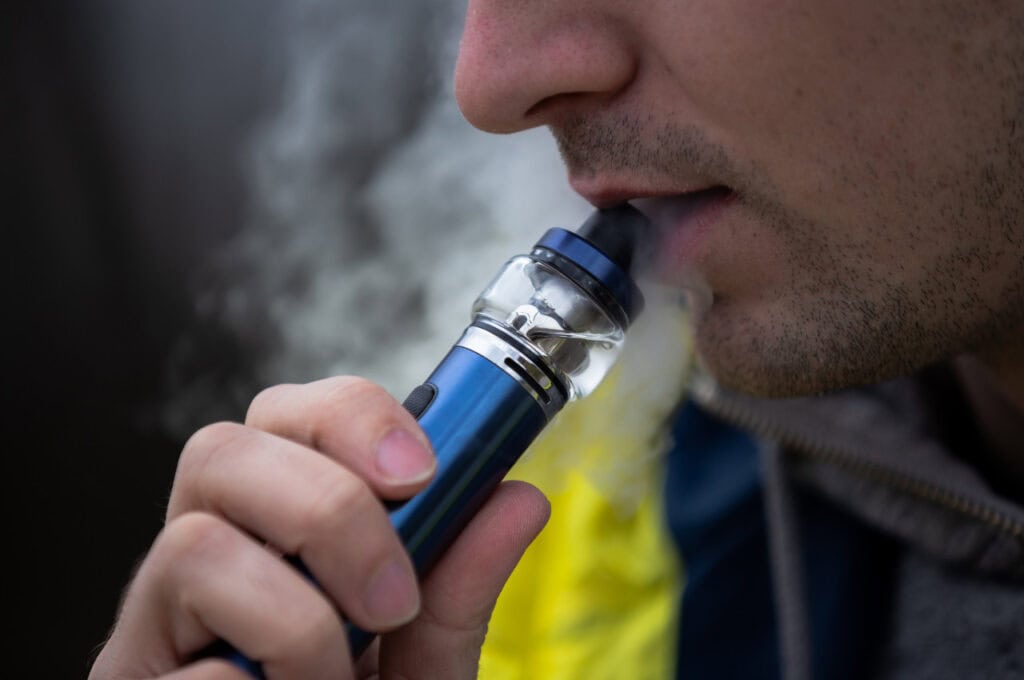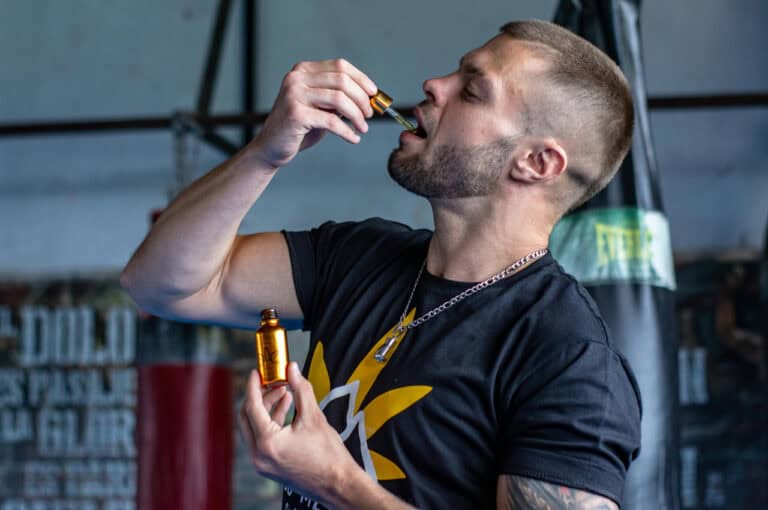Vaping has become a popular alternative to traditional smoking for many adults and teenagers in Palm Beach and beyond. You may have heard concerns about whether vaping could cause gynecomastia, commonly known as “male breast enlargement,” and wonder about the real risks.
At the Palm Beach Beach Gynecomastia Center, we recognize patients have important questions about lifestyle, health, and cosmetic concerns. Read on for an in-depth, medically informed guide to the connection between vaping and gynecomastia, what science tells us, and how to protect your health.
Key Takeaways
- Vaping ingredients: E-liquids may contain nicotine, flavoring chemicals, and other additives that could affect hormone balance.
- Link to gynecomastia: No direct proven connection exists, but vaping increases risk factors that may promote breast tissue growth.
- Hormonal disruption: Substances found in some vape products could interfere with testosterone or estrogen levels in men.
- Other risk factors: Genetics, body weight, certain medications, and underlying health conditions also contribute to gynecomastia.
- Symptoms to watch: Enlarged breast tissue and tenderness in males should prompt evaluation by a healthcare professional.
- Treatment options: Medication or surgery, including male breast reduction, can restore a natural chest contour.
- Expert guidance: Personalized assessment at the Palm Beach Beach Gynecomastia Center is crucial for anyone concerned about their chest appearance.

What Is Gynecomastia and Why Does It Happen?
Gynecomastia refers to benign enlargement of male breast tissue, often causing swelling and tenderness. While it can affect one or both breasts, it usually results in a soft, rubbery mass beneath the nipple.
Hormonal Balance and Breast Tissue
Testosterone and estrogen drive changes in male and female bodies. Men produce both hormones, but testosterone remains dominant. If estrogen levels rise or testosterone drops, glandular breast tissue can enlarge.
A variety of influences, such as puberty, aging, medications, disease, and substance use, can disrupt hormonal balance and lead to gynecomastia. Most cases are not dangerous but can cause distress and self-consciousness.
What’s in Vape Products and How Might They Affect Hormones?
Understanding what goes into vape products is important before examining any link to gynecomastia. Below, we explore the key ingredients found in most e-liquids.
Common Constituents of Vape Juice
Vaping products heat a liquid (“e-juice”) to create an inhalable aerosol. Typical ingredients include propylene glycol, vegetable glycerin, flavoring compounds, and either nicotine or, less commonly, THC or CBD.
Nicotine is the most prevalent active chemical. While traditional cigarettes deliver nicotine through tobacco combustion, vaping supplies it as a purified compound in various concentrations. Some products are labeled as “nicotine-free,” but may still have low trace amounts.
Possible Endocrine Effects of Vaping
Several ingredients in vape liquids raise concern regarding hormone disruption in men.
High levels of nicotine impair testosterone production, sometimes promoting a rise in estrogenic activity. In addition, certain flavoring chemicals or contaminants act as endocrine disruptors. These mimic or alter hormonal signals inside the body.
Although research is ongoing, animal studies and early human evidence suggest some e-liquids could theoretically promote breast tissue growth when used heavily or over long periods.
Finally, vape aerosols can contain metals or residual chemicals that may indirectly harm testicular or pituitary function, affecting hormone regulation even further.
Is There Proof That Vaping Causes Gynecomastia?
Since vaping is a relatively new phenomenon, our understanding about long-term effects continues to develop. We can review what is currently known from clinical studies, case reports, and related research.
Lack of Direct Clinical Evidence
No large-scale studies have conclusively shown that regular vaping causes gynecomastia in men. However, researchers have established that nicotine itself can disrupt the body’s hormonal balance and alter breast tissue physiology.
Patients who vape and present with breast enlargement often have other risk factors, such as obesity or use of medications that affect hormone levels. It remains difficult to isolate vaping as a sole cause.
Connections Pointed Out In Related Research
Despite a lack of proven causality, several lines of evidence point to a strong association. Nicotine and specific chemicals found in some vape liquids:
- Can reduce testosterone or increase estrogen
- May overstimulate gland tissue in the chest
- Interfere with the body’s ability to balance hormones naturally
As a result, practitioners including our surgeons at the Palm Beach office remain alert to the possibility that vaping could contribute to gynecomastia under certain circumstances, particularly in men with other risks.
The Roles of Nicotine, Flavorings, and Cannabinoids
Let’s take a closer look at the ingredients found in vape products and their relationship to hormone changes.
Nicotine’s Impact on Hormones
Nicotine affects more than just your nervous system. Studies have shown that chronic nicotine exposure:
- Lowers circulating testosterone
- Promotes fatty tissue building in the chest
- Triggers increased conversion of testosterone to estrogen through aromatase activity
These effects may become more pronounced with higher doses or frequent, long-term use of nicotine in any form, including vaping.
E-liquid Flavorings and Additives
More than 7,000 flavoring chemicals have been identified in vape products worldwide. Some flavor additives contain molecules called phthalates, parabens, or other xenoestrogens, known to disrupt the endocrine system in animal studies.
Even when individual flavoring agents seem harmless, mixing them or inhaling them at high temperatures can produce new compounds. Some may interfere with cells that regulate hormone production, although human data remains limited.
Cannabis and CBD Vapes
Certain patients use vape devices to inhale THC (tetrahydrocannabinol) or CBD (cannabidiol). Evidence on cannabinoids and hormone levels is mixed. Some research correlates long-term THC use with altered testosterone output and possible breast tissue effects.
The hormonal impact depends strongly on the specific substance, dosage, and individual genetics.
Other Major Factors That Influence Gynecomastia Risk
While vaping gets much attention, you should recognize other well-established risk factors for gynecomastia. Many cases occur due to a combination of reasons working together.
Key Contributing Factors
Consider the following factors that may increase the risk of male breast enlargement:
- Genetic Predisposition: A family tendency to hormone imbalance or glandular tissue growth raises your baseline risk.
- Obesity: Higher levels of body fat can increase estrogen production and decrease testosterone.
- Puberty and Aging: Hormone swings during teenage years and in older age often lead to physiologic breast swelling.
- Medications: Drugs such as anti-androgens, anabolic steroids, anti-anxiety medications, and some heart medications are well-known triggers.
- Chronic Disease: Conditions affecting the liver, kidneys, thyroid, or testicles can disrupt hormone metabolism.
- Substance Use: Alcohol, marijuana, and illicit substances may have hormonal side effects besides vaping or tobacco.
Each of these factors interacts with one another and can add to the likelihood of developing breast swelling and tenderness.
How to Recognize Gynecomastia
Staying aware of early symptoms and signs helps ensure timely diagnosis and effective management.
Symptoms to Watch For
You may notice one or more of the following physical changes:
- A rubbery or firm mass just beneath the nipple or areola
- Breast swelling in one or both sides of the chest
- Tenderness, pain, or sensitivity when pressing the area
- Puffy or enlarged nipples
Changes may appear slowly or rapidly. Some patients also experience mild skin stretching or itching.
Male breast enlargement can resemble excess fat, but true gynecomastia involves glandular tissue and often feels more solid under the skin.
Should you see these changes, it is important to seek professional assessment to confirm the diagnosis and rule out more serious causes.
How Gynecomastia Is Diagnosed
To determine if vaping plays a role in your symptoms, a thorough clinical evaluation is essential. The process usually involves several steps.
Medical Interview
Your provider will review your medical history, including questions about:
- The onset and progression of breast changes
- Use of medications and supplements
- Lifestyle factors such as vaping, tobacco, alcohol, or other substance use
- Your general health and any underlying conditions
Open and honest conversation helps identify potential contributing causes, including the specific vaping product used and its ingredients.
Physical Examination
The exam identifies the nature and extent of breast enlargement. Providers carefully distinguish between glandular gynecomastia and simple fatty tissue (pseudogynecomastia).
Additional findings such as nipple discharge, skin changes, or lumps help rule out rare but serious diagnoses such as breast cancer.
Laboratory and Imaging Tests
Bloodwork is often performed to assess hormone levels, liver and kidney function, and thyroid status. If necessary, your provider may order ultrasound imaging or mammography to evaluate the tissue structure of the chest.
When suspicious features are present, tissue sampling through a small biopsy can clarify the diagnosis.
Treatment Options for Gynecomastia Related to Vaping or Other Causes
The approach to gynecomastia depends on severity, duration, underlying cause, and your preferences.
Medical Management
Mild or recent gynecomastia often resolves with watchful waiting, especially if the cause (like vaping or medication use) is stopped.
Medications such as tamoxifen or aromatase inhibitors can help shrink glandular tissue in certain situations, particularly if symptoms cause discomfort or embarrassment.
Surgical Correction
When breast enlargement persists beyond six to twelve months, surgery may be recommended. At our Palm Beach center, male breast reduction typically involves removal of excess glandular tissue and sculpting of the chest contour. Liposuction can also address associated fatty deposits.
Most patients report a high degree of satisfaction, rapid return to daily activity, and renewed confidence after the procedure.
Support and Patient Education
Ongoing support is crucial. Our team at the Palm Beach Beach Gynecomastia Center provides education on avoiding modifiable risk factors, including safe reduction or cessation of vaping, healthy weight management, and other measures tailored to your unique circumstances.
Preventing Gynecomastia: Steps You Can Take
If you are concerned about gynecomastia or wish to lower your risk, consider these practical prevention strategies. Proactive habits will support both your hormonal and overall health.
- Limit Vape and Tobacco Use: Reducing or stopping nicotine use may protect testosterone levels and prevent hormone imbalance.
- Maintain a Healthy Weight: Achieving and sustaining ideal body fat percentage decreases estrogen production in men.
- Monitor Medications: Review prescribed and over-the-counter drugs with your physician for known gynecomastia risks.
- Address Underlying Conditions: Treat chronic illnesses, including thyroid, liver, or kidney disease, to support hormone balance.
- Moderate Alcohol and Marijuana Use: Both substances can impact the endocrine system if used heavily over time.
These steps offer a well-rounded, evidence-informed action plan, especially if you have started to notice any chest changes.

When to Seek Professional Help and What to Expect at Your Visit
Not every case of breast swelling in men requires treatment, but it is wise to consult a specialist if:
- Symptoms arise suddenly or progress quickly
- There is pain or significant tenderness in the area
- You notice nipple discharge, skin changes, or a palpable lump
- Swelling causes emotional or physical distress
At your consultation, the Palm Beach Beach Gynecomastia Center team will provide respectful, confidential care. We work with you to determine the most appropriate evaluation, discuss risks and benefits, and personalize a treatment plan that best matches your goals.
Understanding Vaping, Gynecomastia, and Your Best Path Forward
The relationship between vaping and gynecomastia is complex and not yet definitively proven. Nonetheless, the ingredients in vaping products could influence hormone levels in ways that may promote breast enlargement in susceptible individuals.
If you have further questions about gynecomastia, vaping, or available treatments, we welcome you to schedule a confidential consultation with our experienced team at the Palm Beach Gynecomastia Center. Taking action today may help put you on the path to hormonal health and renewed self-assurance.







